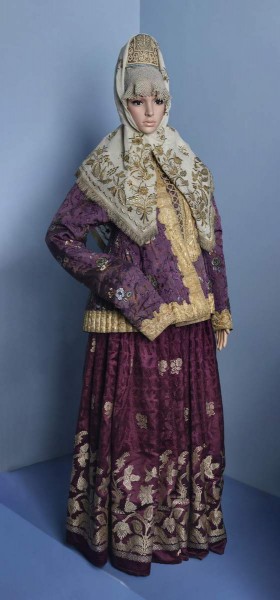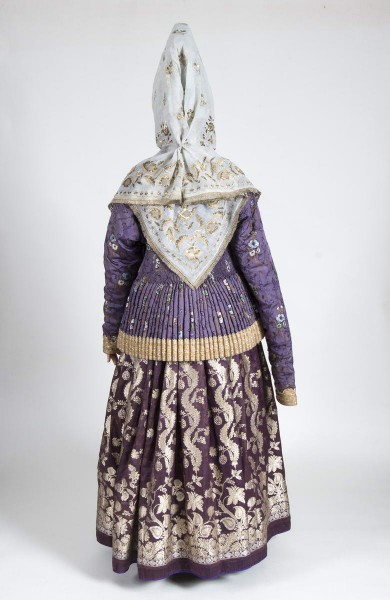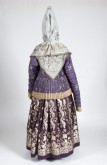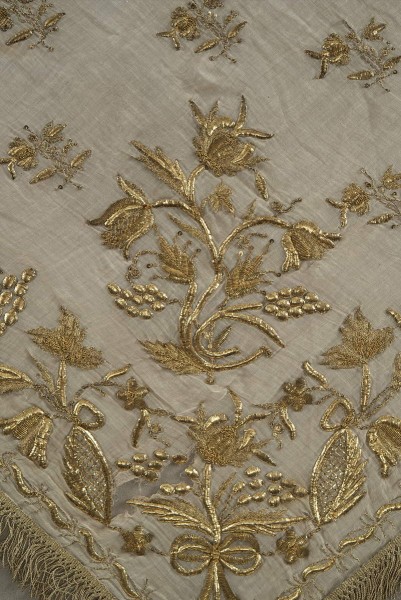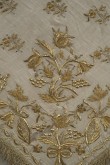Female Festive Costume
First half of the 19th century
- Brocade, silk, galloon, шнур, passementerie, mother of pearl, stringing, glass, pearl embroidery, кисея, gold embroidery, fringe
- Тк-83; Тк-1174; В-6707; В-6742
Sarafan
Silk fabric
Shugai
Silk fabric, lace, braid
The shugai’s right sleeve is noticeably longer than its left one. This unusual and still-unexplained tailoring detail was noted by Fyodor Solntsev, who sketched the female dress of various Russian gubernias in the 1830s and recorded this peculiarity of the clothing of Torzhok’s female inhabitants (Solntsev 1849–1853).
“Tver Ukrut” Headdress
Braid, mother of pearl, stringing, glass, pearl embroidery
Kerchief
Muslin, gold and silk threads, chain-stitch embroidery
The gold patterns on white silk or muslin headscarves were created from a thin metallic gold thread called bit’ (flattened purl — translator’s note), ultra-fine purl twisted into spirals and miniature round spangles, all of which lent the embroidery an unusual richness of texture. The patterns in the form of lilies, roses and clusters of grapes have such high relief that they seem embossed rather than sewn.
